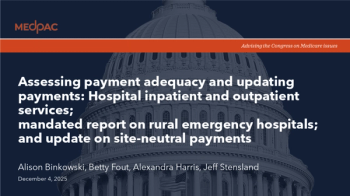
AI is key to modern disease surveillance
Primary care physicians may be the first point of contact for the next epidemic. Why don’t we give them the tech to detect and respond to outbreaks?
Modern physicians are confronted with a world of endless data, yet they have little ability to process any of it effectively, since it is spread through information silos and nearly impossible to leverage for effective care.
Real-time data analytics and AI have the potential to revolutionize how independent physicians detect and respond to disease outbreaks and epidemics. The consequences of inaction are too dire for these innovations to be left unused.
Patient care in a world of chaos
The world is quickly changing, presenting
A successful tracking solution
Most analysis today is performed on insurance claims data, since they are the cleanest data source available. Unfortunately, claims data are missing crucial patient details like lab results and care plans, and it is usually 90 to 120 days out of data by the time they are available. Disease outbreaks unfold over days and weeks, not months, so claims data are a poor source for real-time actions.
At the end of the day, clinical analytics and AI are tools. The requirements for a successful, economically feasible tracking solution have little to do with the nuances of AI. The key requirements are as follows:
- High-quality data sources
- Real-time monitoring and alerting
- Analysis of everything happening everywhere at once
High-quality data — any solution stands or falls on the data
As any data scientist would attest, the success of an AI solution is almost entirely dependent on the completeness and quality of the input data. For any monitoring solution, the important data are the triggers — the data points that are indicative of a problem.
Epidemic outbreaks typically occur in the emergency room (ER), urgent care and primary care settings as the first points of contact. From any of these sources, it should be possible to gather chief patient complaints, vital signs, diagnoses, treatments, and care plans or discharge instructions. Depending on the situation, there may also be lab results and medications (including vaccines).
Most of this should be available from the EHRs at the treatment facility, though lab vendors, pharmacies and health information exchanges may be data sources as well. If available, wearables and medical devices can provide excellent data but are not ubiquitous or accessible enough to be a reliable data source.
For completeness, all these data sources are key. Unfortunately, it can be very complicated to gather the data, and the data provided are often unusable in their raw form. Therefore, a prerequisite of monitoring is a solution that can quickly gather data from all these sources, combine them all, clean them up and remove duplicative information.
Real time — it is not better to be late than never
Once the data sources are identified, timeliness is the next concern. The legacy approach of faxes or phone calls is not acceptable. The data gathering must be continuous and timely. There are national medical record networks to query, but they do not automatically send updates and there is a cost to retrieve the data.
On the other hand, hospital ERs send admission, discharge and transfer (ADT) notifications for patients treated at the ER. In theory, they should be sent to the primary care physician, but that is dependent on paperwork being done correctly. There are solutions available that can “listen” for ADT alerts on a per-patient basis, but these will likely incur a cost.
There are also federal and nonprofit data sources for epidemic data. The Centers for Disease Control and Prevention’s
For larger practices, it may make sense to proactively query these data sources. But for most independent practices, they may need to rely on local hospitals and public health organizations for relevant alerts. Alerts from hospitals and government sources can provide the trigger to gather recent patient records. Physicians know their patients, and certain groups will be more likely to be the first ones affected, so closer monitoring can be applied to those groups.
The analysis — finally, the time for AI is here
For data-gathering purposes, AI is less useful since the problems are logistical, regulatory and operational. Once there is a clean, real-time data set, the advanced tech can be applied. Just like watching a heart rate monitor in a hospital, the patient’s journey is a collection of signals, and the system is looking for the patterns, anomalies and correlations. AI, or really machine learning, is very good at finding patterns. Any effective system would also need to be trained on key symptoms and the conditions they indicate, since the accuracy of diagnoses can’t be relied on.
The combination of discrete data points (lab results, diagnoses, etc.) with the more descriptive elements in a note entered in a patient chart (descriptions of complaints, symptoms, etc.) provides the signals needed. An AI algorithm can then look for geographically related patients with similar symptoms occurring close in time and becoming more frequent over time. When the AI’s confidence level is high enough, it should alert the relevant physician.
It is important that this should be a physician enabler, not a clinical decision tool. No matter how advanced AI becomes, there is no replacement for the experience and judgment of a trained physician.
Making the dream a reality
When examining the building blocks of an effective outbreak detection solution, the primary roadblocks are not advanced technologies, but the quality and availability of data. Fancy AI solutions are useless, or even harmful, without the data needed. Once high-quality, complete and timely data are available, the creation of detection tools is relatively straightforward.
These kinds of solutions have been available in other disciplines for a long time (e.g., weather forecasting, financial modeling). Health care is held back by the dismal state of clinical data interoperability, not the lack of talented individuals ready to solve complex problems. One of the key tenets of data science is that making data accessible to the right people who understand realities on the ground always generates innovative solutions.
Ben Newton is the CEO of
Newsletter
Stay informed and empowered with Medical Economics enewsletter, delivering expert insights, financial strategies, practice management tips and technology trends — tailored for today’s physicians.















